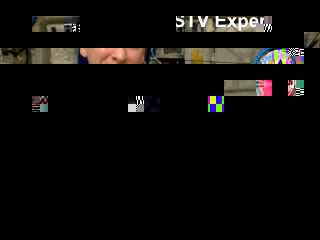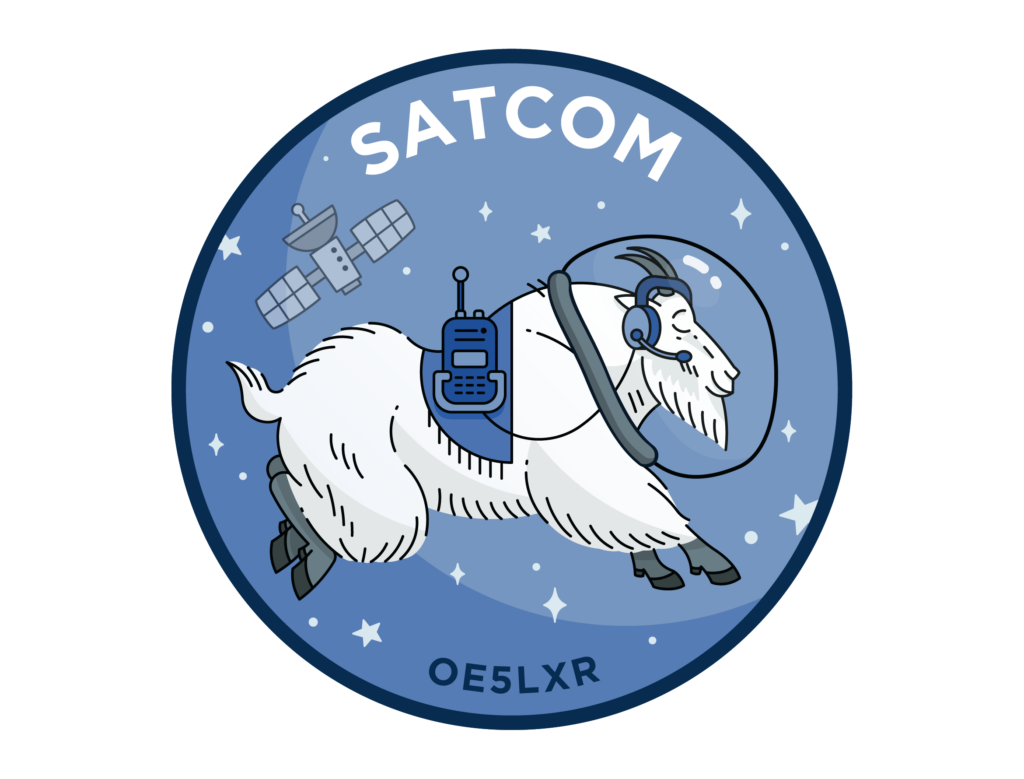KG-STV on ISS – Digital SSTV on the International Space Station
Estimated reading time: 7 minutes
On Sunday, 20th February 2022 ARISS Europe has conducted an experiment using the ISS cross-band repeater to transmit digitally encoded SSTV images. The down-link frequency of the ISS cross-band repeater is 437.800 MHz FM. Images have been encoded using KG-STV using MSK (Minimum Shift-Keying) w/o error correction as modulation. Each transmission sequence has consisted of a transmission lasting 1:40 followed by a pause of 1:20. Successfully obtained images could have been uploaded, but no diploma will be issued.
Further information is available at AMSAT-NL from where you can also download the required software prepared by Eric, PA2EON. In case the download should be unavailable in the future a copy of the ZIP archive is stored and can be downloaded at the end of this article.
Table of Contents
Introduction to KG-STV
KG-STV was developed by JJ0OBZ in 2010 and is a digital image transmission mode as well as the name of the Windows executable used for sending and receiving images encoded by KG-STV. KG-STV transmits images in blocks of 16×16 pixels which are compressed and digitally encoded block-by-block during transmission. KG-STV uses MSK (Minimum Shift-Keying) and 4LFSK (4-Level Frequency-Shift-Keying) as modulation modes.
KG-STV Receive Setup
In order to receive KG-STV encoded images from the ISS you need a omnidirectional VHF (70 cm) antenna, a radio capable of demodulating FM at 70 cm and a sound-card or other radio/computer interface to feed the radios base band (audio) signal into your computer. For capturing the images sent during the experiment I’ve used a Diamond NR-760H, Yaesu FT-817ND and a TigerTronics SignaLinkUSB for my KG-STV receive setup.
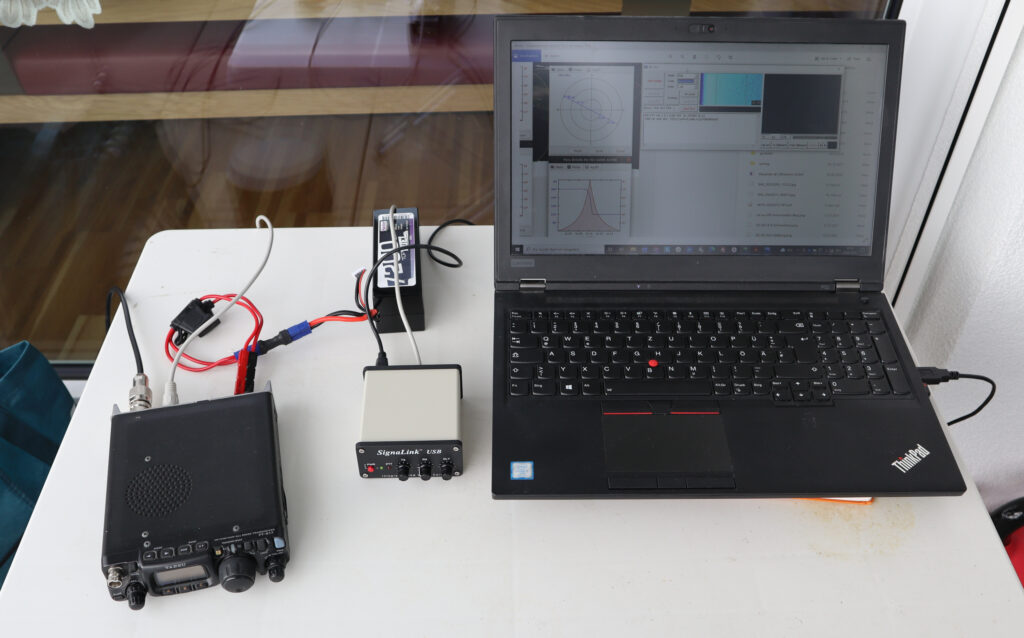
The TigerTronics SignaLinkUSB is a neat little USB powered, low noise sound card which can directly be connected to the Yaesu FT-817NDs ACC port. Gain for both TX and RX branch can be directly controlled via rotary knobs accessible on the front of the device which – in combination with the waterfall chart provided by KG-STV – allows for easy adjustment of the desired sound input level.
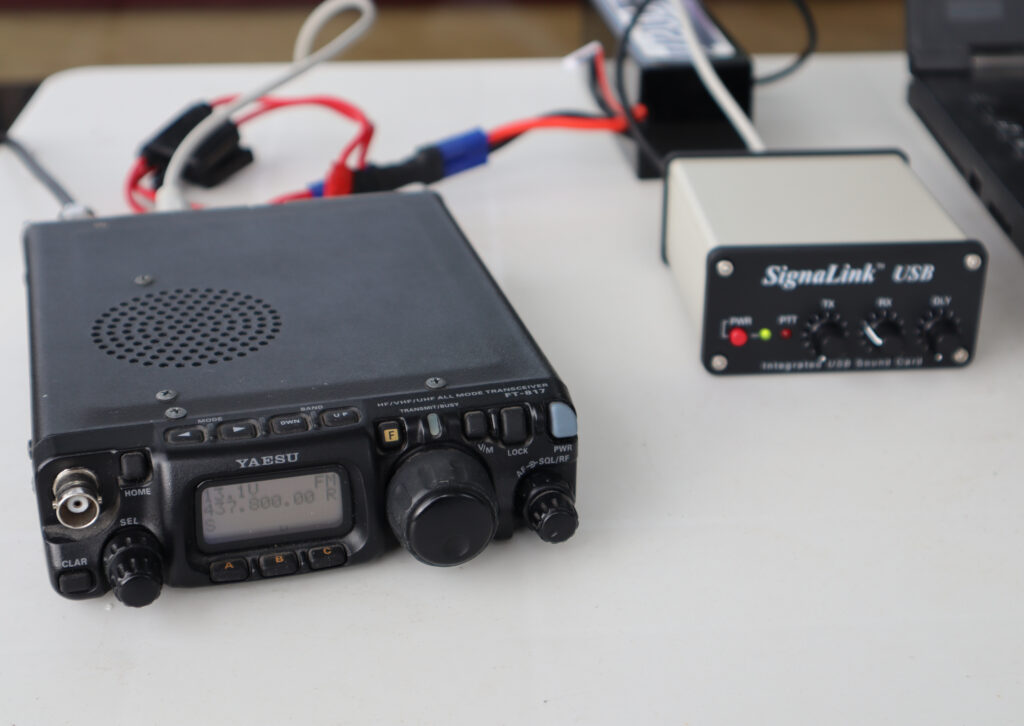
KG-STV Configuration
When starting the KG-STV (Windows – no luck on Linux) executable the first step is to select the desired modulation mode for encoding and decoding. For decoding the KG-STV encoded images from the KG-STV ISS experiment on 20th February 2022 I’ve selected MSK (Minimum Shift-Keying).
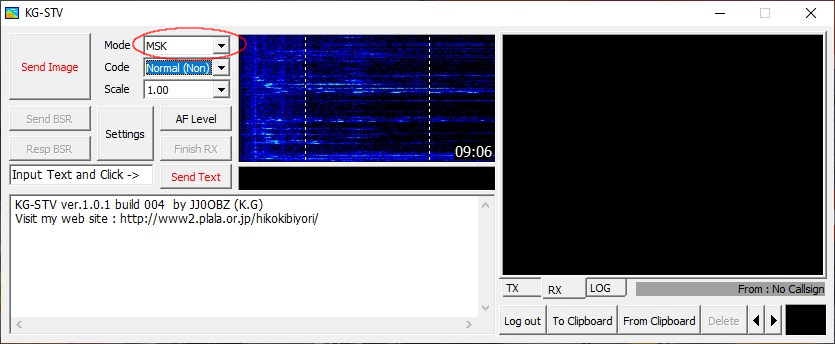
The second step is to open the settings menu (left-klick on „Settings“) and to select the correct audio input device. Since I’ve been using the TigerTronics SignaLinkUSB I’ve had to select Line (USB AUDIO CODEC). However, it would have been just as fine to select the built-in microphone of my computer and place the radios speaker next to it. Be careful adjusting the output volume of your radio though, in order to avoid driving your microphone into saturation.
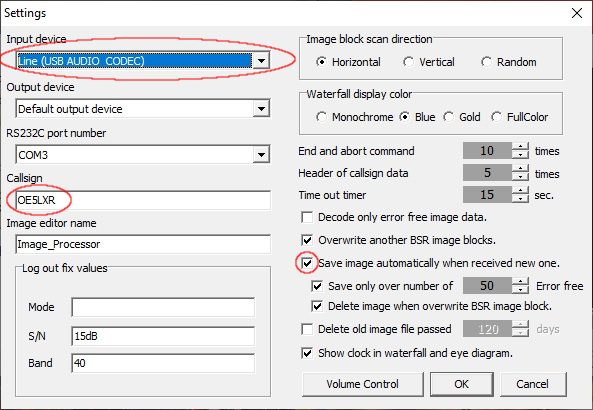
Furthermore I suggest to also select the checkbox Save image automatically when receiving a new one to make sure all received images are automatically stored. Adding your callsign is only needed when you also intend to use KG-STV for image transmission.
What worked, what didn’t work …
I chose the last orbit (11:38 – 11:51 UTC) of the experiment since it was a direct overhead flight over my position. Unfortunately I only had a Diamond NR-760H at hand, which is a 2 m/70 cm mobile antenna. Being primarily designed as a mobile antenna means the antenna „expects“ the presence of a metallic surface like the chassis of your car as a counterpoise. I was abusing it as an handheld antenna instead (with a counterpoise hopefully provided by my hand/body).
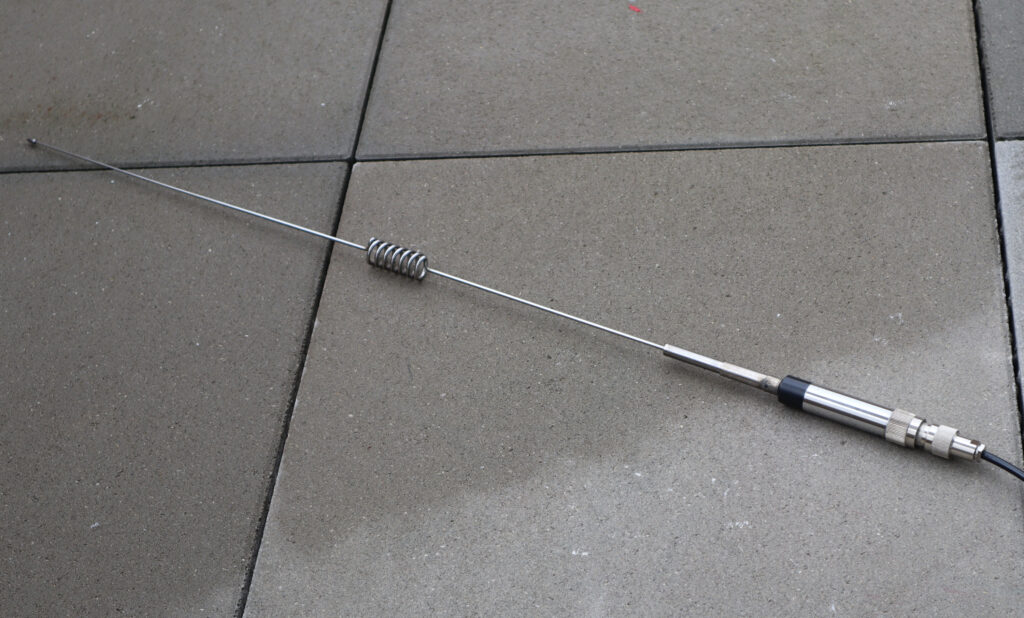
Regardless, the bigger problem during reception proved the sound of the digitally encoded signal, which sounded very much like white noise. I was expecting the more 56k modem alike sound of „analogue“ SSTV transmission modes such as PD120 (usually used during ISS SSTV). Consequently I was unable to „track“ the ISS as it transitioned across the sky. Looking at the RSSI indicator of the Yaesu FT-817ND would have been a possibility but would have required acrobatics and cable-management skills which are beyond me. Since then I’ve improved my setup for ISS reception by adding a QFH antenna which offers hemispherical reception – no more manual tracking required.
To top it off a Swiss station (HB9…) was not in the know about the ongoing experiment and called „CQ Satellite“ on top of the actual image. Despite all those setbacks a couple of 16×16 pixel blocks were successfully decoded!
